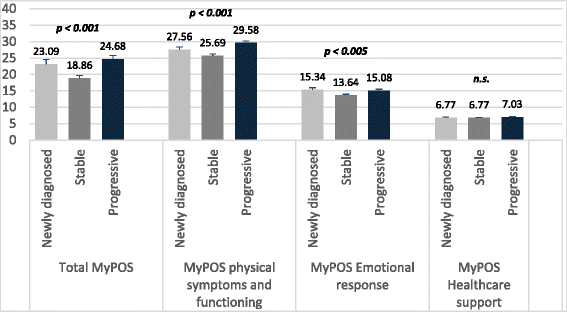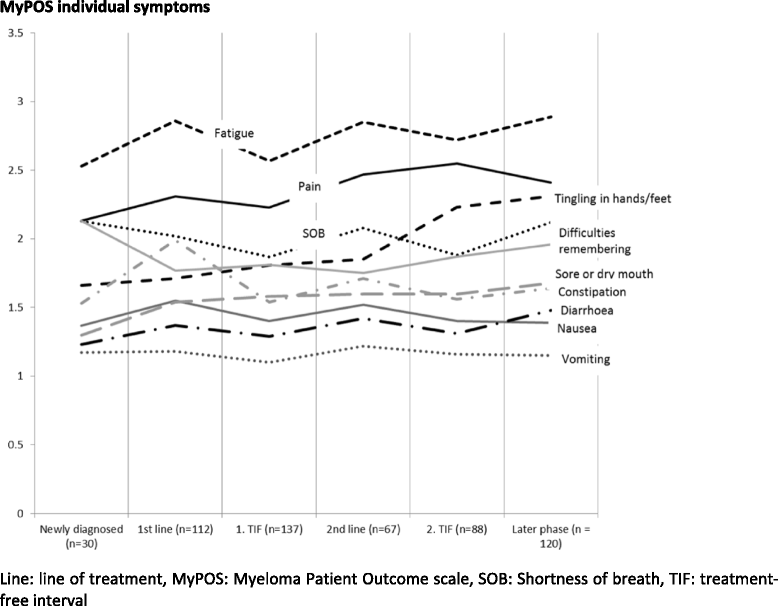The impact of disease-related symptoms and palliative care concerns on health-related quality of life in multiple myeloma: a multi-centre study
- PMID: 27387201
- PMCID: PMC4937527
- DOI: 10.1186/s12885-016-2410-2
The impact of disease-related symptoms and palliative care concerns on health-related quality of life in multiple myeloma: a multi-centre study
Abstract
Background: Multiple myeloma, the second most common haematological cancer, remains incurable. Its incidence is rising due to population ageing. Despite the impact of the disease and its treatment, not much is known on who is most in need of supportive and palliative care. This study aimed to (a) assess symptom severity, palliative care concerns and health-related quality of life (HRQOL) in patients with multiple myeloma, and (b) to determine which factors are associated with a lower quality of life. We further wanted to know (c) whether general symptom level has a stronger influence on HRQOL than disease characteristics.
Methods: This multi-centre cross-sectional study sampled two cohorts of patients with multiple myeloma from 18 haematological cancer centres in the UK. The Myeloma Patient Outcome Scale (MyPOS) was used to measure symptoms and concerns. Measures of quality of life included the EORTC QLQ-C30, its myeloma module and the EuroQoL EQ-5D. Data were collected on socio-demographic, disease and treatment characteristics and phase of illness. Point prevalence of symptoms and concerns was determined. Multiple regression models quantified relationships between independent factors and the MyPOS, EORTC global quality of life item and EQ5D Index.
Results: Five-hundred-fifty-seven patients, on average 3.5 years (SD: 3.4) post-diagnosis, were recruited. 18.2 % had newly diagnosed disease, 47.9 % were in a treatment-free interval and 32.7 % had relapsed/progressive disease phase. Patients reported a mean of 7.2 symptoms (SD: 3.3) out of 15 potential symptoms. The most common symptoms were pain (72 %), fatigue (88 %) and breathlessness (61 %). Those with relapsed/progressive disease reported the highest mean number of symptoms and the highest overall palliative care concerns (F = 9.56, p < 0.001). Factors associated with high palliative care concerns were a general high symptom level, presence of pain, anxiety, low physical function, younger age, and being in the advanced stages of disease.
Conclusion: Patients with multiple myeloma have a high symptom burden and low HRQOL, in the advanced and the earlier stages of disease. Identification of patients in need of supportive care should focus on assessing patient-reported outcomes such as symptoms and functioning regularly in clinical practice, complementary to traditional biomedical markers.
Keywords: Health-related quality of life; Multiple myeloma; Palliative Care Outcome Scale; Palliative care; Quality of life; Symptom burden.
Figures




References
-
- Phekoo KJ, Schey SA, Richard MA, Bevan DH, Bell S, Gillett D, Moller H. A population study to define the incidence and survival of multiple myeloma in a National Health Service Region in UK. Br J Haematol. 2004;127:299–304. - PubMed
Publication types
MeSH terms
LinkOut - more resources
Full Text Sources
Other Literature Sources
Medical

